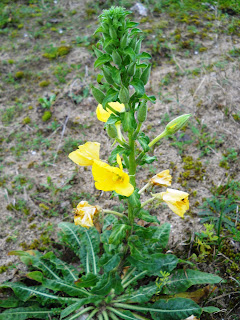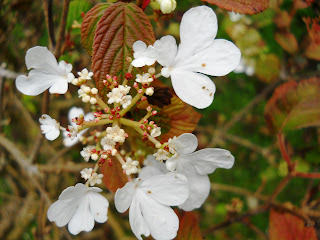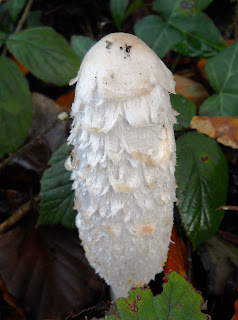It's amazing how bigoted people can be about certain animals. Alexander Chancellor, for example, can see no utility in the 'adder' unless their conservation can be used as an argument against the development of wind farms (which he likes even less) in his native Northamptonshire (http://www.guardian.co.uk/commentisfree/belief/2011/nov/24/emulate-christ-tribunal-cheek-slapped?INTCMP=SRCH). He doesn't seem to appreciate, in his Chancellorocentric view of the natural world, that the snake only bites people and their animals when they pick it up or tread on it (it's a waste of its hard-generated venom as the snake can't swallow them). Vipera berus is an important part of the ecology of many areas, as it largely feeds on rodents with the potential to show population explosions. The snake's loss from areas is generally a sign that the environment has suffered from intensive agriculture or urbanisation. The adder is actually a beautifully adapted little beast with the largest geographical range (southern Italy to the high Arctic) of any reptile. It's a good job that Alexander doesn't live in India or Australia as the tiger or the shark would be respectively doomed.
This blog may help people explore some of the 'hidden' issues involved in certain media treatments of environmental and scientific issues. Using personal digital images, it's also intended to emphasise seasonal (and other) changes in natural history of the Swansea (South Wales) area. The material should help participants in field-based modules and people generally interested in the natural world. The views are wholly those of the author.
Friday, 25 November 2011
Thursday, 24 November 2011
Wednesday, 23 November 2011
Seeing the Changes 434
Swansea University has, by using sections of tree trunk to limit carparking, created a wonderful substrate for the growth of fungi. Some populations are very impressive and extensive and one can certainly see masses of Sulphur tuft (Hypholoma fasciculare), Trooping Crumble cap (Coprinus disseminatus) and Coriolus versicolor brackets. More fungi were evident between Swansea and Mumbles. In that area, the flowers of Autumn are slow to go. Along with numerous Daisy, Dandelion, the odd Crucifer and Ragwort, Evening primrose (Oenothera spp), Bramble (Rubus fructicosus), Burnet rose (Rosa pampinellifolia), Sea rocket (Cakile maritima), Sea mayweed (Matricaria maritima) and Yarrow (Achillea millefolium) were still in flower. The first of the Winter heliotrope (Petasites fragrans) were, however, peeping though. Unremarkably, cultivated, foreign plants were also in bloom. At Blackpill, Oystercatchers (Haematopus ostralegus) massed on the beach.
Tuesday, 22 November 2011
Orchid of the Night
A orchid (Bulbophyllum nocturnum) from an island off Papua New Guinea has been described by a Dutch scientist that, unlike the other 25,000 species of such plants (one is illustrated), only flowers at night (http://www.guardian.co.uk/science/2011/nov/22/night-flowering-orchid-discovered?INTCMP=SRCH). This suggests that it must be pollinated exclusively by some nocturnal agent (a moth?). Unfortunately, the island is scheduled for logging activity.
Saturday, 19 November 2011
Fungal Inventory
News that the Royal Botanical Gardens at Kew are to attempt to produce a genetic classification of the UK's fungi is interesting (http://www.bbc.co.uk/news/science-environment-15726717). The claim is that, without a clear understanding of the species we currently have, we will never know what we have lost to climate change, pollution events and urbanisation etc. It is clearly felt that relying on spore patterns produced by fruiting bodies only gives a partial picture. The fungi are incredibly important in natural recycling of carbon etc. The wax-caps are first on the agenda but it sounds as if the tiny soil fungi are not due for study any time soon.
Friday, 18 November 2011
Thursday, 17 November 2011
An Asalt on Our Senses?
I have always argued that sodium chloride is sodium chloride and there is little point in paying for gourmet salts. A new study (http://www.guardian.co.uk/society/2011/nov/17/gourmet-salt-health-celebrity-chefs?INTCMP=SRCH) has confirmed that both are equally bad for you. You probably only rarely need to add salt to processed foods. The manufacturers have leaped in with arguments that the 'trace elements' in sea salt etc are of benefit but they are present in tiny amounts and are variable impurities.
Froggone!
Disturbing news that a recent report concludes that a 'perfect storm' of climate change, habitat loss and a fungal disease (chytridiomycosis) seems poised to flip most of the world's remaining Amphibia (frogs, toads, newts and salamanders) into extinction (http://www.guardian.co.uk/environment/2011/nov/16/amphibians-terrifying-extinction-threat). The first two of these factors seem, in many parts of the globe, to be additive whereas chytridiomycosis seems to strike more locally and sporadically. I personally think that the loss of these fascinating beasts would be awful as well as having 'knock on' effects on the ecology of regions. Urgent action is needed! Hop to it!
Sunday, 13 November 2011
Seeing the Changes 432
Quite a lot of speculation in the media about whether nature has been 'fooled' into producing a 'second spring' (http://www.guardian.co.uk/environment/2011/nov/13/warm-autumn-wildlife-oddities?INTCMP=SRCH). This is largely based on seeing seasonal oddities. I don't think that too much should be read into them as strange timings for insects and flowers are not that uncommon. Locally, Orange hawkweed (Pilosella aurantiaca) is late in flower and the bushes in my garden are flowering for the third or fourth time.
Saturday, 12 November 2011
Monday, 7 November 2011
Sunday, 6 November 2011
Westonbirt Wonders
Went to Westonbirt Arboretum (near Tetbury in Gloucestershire) to check out the Autumn leaf colours. There were lots of impressively garish trees and some nice views of individual Acer leaves. Some of the fungi were also impressive and, in spite of the recent cold weather, flies were still active on the Cow parsley in the glades.
Friday, 4 November 2011
Religion and Conservation Philosophy
Given the recent field course in Sikkim and our exposure to varied religions, it is interesting to note the debate about the increasing world population as seen from a Buddhist perspective (http://www.guardian.co.uk/commentisfree/belief/2011/oct/31/population-growth-buddhist-reincarnation). Buddhists apparently do not believe that reincarnation is a matter of 'one out -one in' where which a permanent 'soul' persists but prefer to talk in terms of rebirth.
Subscribe to:
Comments (Atom)
-
I n the UK and US, a pparently popular and successful vegan/vegetarian restaurants are reportedly closing or adding meat to their menus ( ...
-
Early ripening fruit may seem convenient but some folk think it confirms environmental stress. There's also a possibility th...






























%20mating%20NWCW.jpg)

